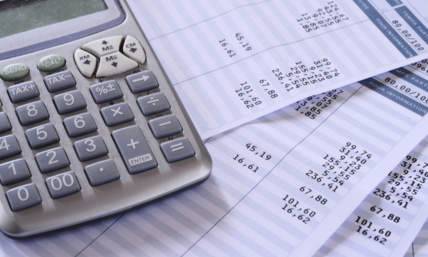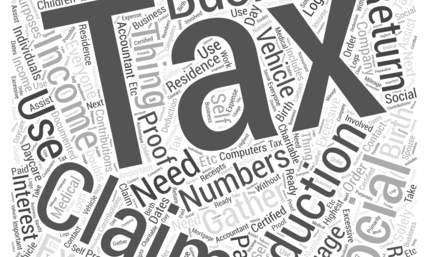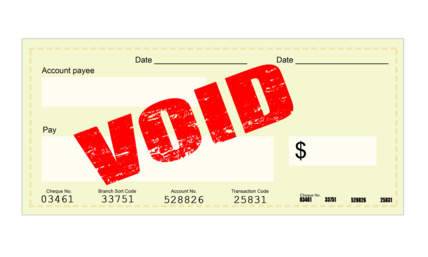What Is A Cash Book? [How It Works With Examples]
Bookkeeping and accounting rely on good record keeping and when it comes to cash transactions this is typically done via a cash book. If you are not familiar with this system of recording and verification you may wonder what is a cash book?
We take a look at what it is, how it works and provide an example to help you understand its function.
Also read: The Golden Rules Of Accounting

A Cash Book Explained
A cash book is a financial journal in which all cash payments and cash receipts are recorded during a particular period. This includes bank withdrawals and deposits. All transactions in the cash book are recorded either on the left or right side of the cash book.
Cash receipts are recorded on the left side of the cash book and cash payments or disbursements are recorded on the right side. The difference between the two sides of the cash book reflects the cash in hand.
The cash transactions of a business are recorded in chronological order in the cash book and the balance is typically verified and updated on a daily basis.
Entries in the cash book are posted to the general ledger. This is why the cash book is a subsidiary of the general ledger. Larger businesses may divide the cash book into a cash disbursement journal and a cash receipt journal.
Also read: Why Stay-At-Home Parents Should Consider A Career In Virtual Bookkeeping
Types Of Cash Book In Accounting
Keeping a detailed record of cash transactions in a cash book is a very important part of bookkeeping and accounting. There are three kinds of cash books, single column, double column and triple column.
A single column cash book records receipts on the left and payments on the right. Cash receipts are called ‘debit entry’ with debit describing an increase in assets or a decrease in liabilities.
Cash payments or disbursements are referred to as ‘credit entry’ and credit describes the opposite for the company’s balance.
A double column cash book includes a column for discounts that are allowed on cash receipts or discounts received on cash payments. It may also be used for recording bank account transactions.
Triple column cash books have columns for cash transactions, sale and purchase discounts as well as bank account transactions.
Also read: Starting A Virtual Bookkeeping Business
How A Cash Book Works
When cash transactions take place within an organization they are noted in the cash book on an ongoing basis. This may be done daily or weekly depending on the frequency of the cash transactions.
For bigger companies a cash disbursement journal is used for recording all cash payments out of the business. This may include payments to vendors which reduces the amount of accounts payable.
A cash receipt journal will record all cash received into the business. This may be payments from customers for goods or services on outstanding balances or cash sales.
The objective of a cash book is the effective and efficient management of the cash that goes into and out of the business. It is a much simpler method of checking cash rather than using the general ledger and allows business accountants to more efficiently budget their cash.
Also read: The 6 Golden Rules Of Personal Finance

Cash Account Vs Cash Book
A cash book differs from a cash account in that it operates both as a journal and a ledger. A cash account on the other hand is laid out like a ledger and is located in the general ledger.
The cash account is typically reconciled monthly while cash books are updated and verified on an ongoing basis. This is why it is much simpler to trace cash transactions through a cash book rather than through a cash account.
Mistakes are more easily spotted when there is daily verification and entries are regularly updated. The details and source of funds are required in a cash book whereas this is not required in a cash account.
How To Record In A Cash Book
Cash books have a credit and debit side. Cash received into the business is recorded as a debit on the left hand side and cash going out of the business as payments are recorded as a credit on the right side.
The resulting difference between the two is the balance of the cash in hand and will be a net debit balance if cash flow of the company is positive.
A cash book is structured with columns, either single, double or triple. A standard single column cash book typically comprises four headers of date, description, reference and amount.
These headers appear on the left side of the cash book for receipts and the right side for payments.
The date column should contain the date of the transaction not the date it is written into the cash book if they are different. The description column contains a short narrative of the transaction.
The reference column usually contains the account number and the amount column contains the amount of the transaction.
A cash book is normally updated on a continuous basis and should be in chronological order according to the transactions.
Also read: 10 Free Bookkeeping Courses
Single Column Cash Book Example
As an example, the cash transactions listed below are for the month of September 2016. They are then entered in the single column cash book below.
Sep. 01: Cash in hand $2,327
Sep. 02: August Salaries $1,500
Sep. 05: Cash received $1,360
Sep. 06: Purchased merchandise $700
Sep. 07: Cash sales 1st week $2,350
Sep. 10: Paid cash (office furniture) $1,540
Sep. 12: Purchased stationery $85
Sep. 15: Cash sales for 2nd week $4,500
Sep. 17: Payment to A & Co. $890
Sep. 20: Purchased merchandise $1,230
Sep. 21: Cash sales for 3rd week $1,200
Sep. 24: Cash received S & Co. $1,200
Sep. 28: Office rent $800
Sep. 30: Cash sales for final week $3,600
https://learn.financestrategists.com/wp-content/uploads/single-column-cash-book-img2-1.png
Final Thoughts
A cash book gives better visibility to the cash transactions of a business. It also helps to streamline the accounting process and helps with budgeting and planning.
Our pay stub maker could be a useful tool to use alongside your various other softwares that keep your business running efficiently.









![What Is A Cash Book? [How It Works With Examples]](https://www.thepaystubs.com/cms-uploads/media/cache/author_article/files/cms/writers/thumbnail/606203657443e953830870.jpeg)





